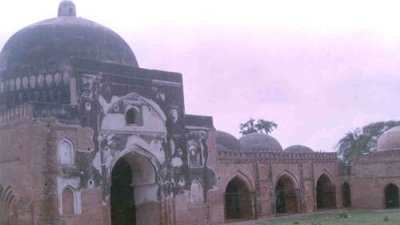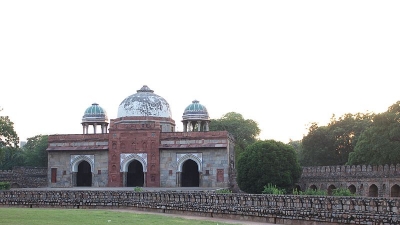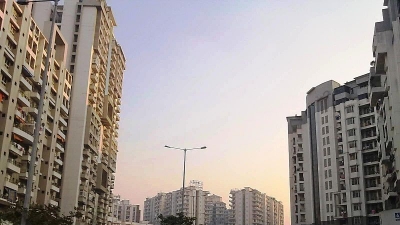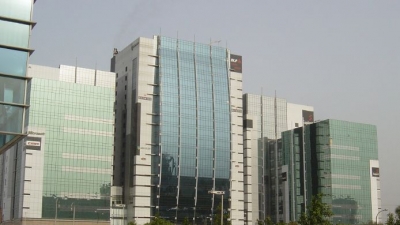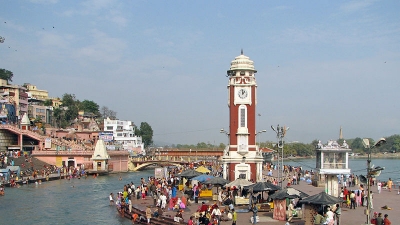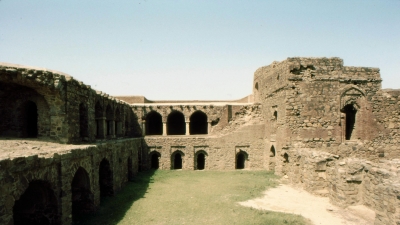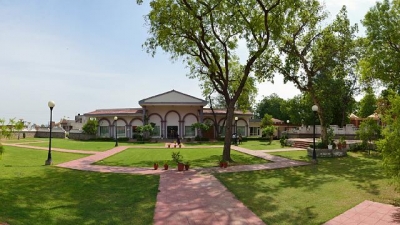Panipat Attractions - Tourist Places To Visit In Panipat
-
01Panipat Museum
 + Read More
+ Read MoreThe Battle of Panipat Memorial Society set-up by the Haryana Government has built a museum to highlight the important historical events leading to the three battles of Panipat and their impact on the overall history of the country.
The objective of setting up the Panipat Museum was also to provide information on art, history, crafts and archaeology generated by the consequences of the three battles.
The museum houses exhibits including sculptures, antiquities, arms, weapons, armours, pottery, jewellery, important documents, manuscripts, art and craft objects, handicrafts, maps, articles, photographs and slides and much more. It also displays objects that highlight the patriotism and valour of the sons of the country who sacrificed their lives to drive away the Muslim invaders.
The martyrs in the struggle include the venerable names of Samrat Hem Chandra Vikramaditya, a local hero from Rewari in Haryana, Raja Suraj Mal of Bharatpur in Rajasthan, Maharaja of Patiala and the Marathas including Sadashiv Rao Bhau, Tukuj Shinde, Vishwas Rao Peshwa and innumerable other brave hearts. The Panipat Museum is situated 5 km from the Canal Rest House of Binijhol.
-
02Kabuli Bagh
+ Read MoreKabuli Bagh, comprising a garden, a mosque and a tank, was built by Mughal emperor, Babur, to celebrate his victory over Ibrahim Lodhi in the First Battle of Panipat. He named the mosque as well as the garden after his wife Mussammat Kabuli Begum.
Six years later, a congratulatory platform or a chabutra named Fateh Mubarak made of stones was added to the memorial by his son, Humayun, after he defeated Salim Shah. The inscription on it dates it to 934 Hijri corresponding to 1557 AD.
The mosque is flanked by two chambers on both its sides. Its parapet bears a Persian inscription running along its length. The square shaped prayer hall of the mosque has annexes on its sides, each one comprising nine bays and topped with semi-circular domes built on low drums. The high façade of the mosque is plastered with lime and divided into panels.
The entire memorial including the mosque, the tank and the garden still exist in perfect shape some two kilometres from the city of Panipat.
-
03Kala Amb
+ Read MoreKala Amb was built in memory of the Marathas who fought with Ahmed Shah Abdali in the Third Battle of Panipat in the year 1761. The Maratha forces were led by Sadashivrao Bhau, Vishwasrao and Mahadaji Shinde. The exact site where the battle was fought was pinpointed by a mango tree that was supposed to have grown there.
It produced mangoes of black colour. It is believed that the colour of the mango tree was black since it stood on the soil that was mixed with the blood of the soldier. The tree has, of course, disappeared since a long time.
The actual reason why the memorial is labelled black may be the dark green foliage that grows here. The site has a brick pillar with an iron rod. The pillar bears the inscription in English and Urdu detailing a brief account of the battle. It is ringed by an iron fence. A society headed by the governor of Haryana is working for the development and beautification of the tourist site.
-
04Grave Of Ibrahim Lodhi
 + Read More
+ Read MoreIbrahim Lodhi fought the First Battle of Panipat with Mughal emperor, Babur in a small village in Panipat on 21st April, 1526, but was defeated and killed. The battle was one of the earliest few in India, where field artillery, fire arms and gunpowder were used.
According to an estimate, Babur’s army numbered about 15,000 soldiers and had 25 pieces of artillery while Ibrahim Lodhi’s army had around 1000,000 men comprising 30,000 to 40,000 fighting forces and camp followers. It also included 1000 war elephants.
Since Babur was a shrewd military strategist he placed his cannons behind a row of carts tied with the unbreakable ropes made out of animal hides. The cannons were supported and shielded by mantelets. This ensured that his army could fire the guns without being hit back.
Ibrahim Lodhi died in the battlefield and was abandoned by his followers. His dead body was buried in a tomb located near the tehsil office in Panipat. Later on the British government built a simple platform with a brief inscription in Urdu.
-
05Hemu's Samadhi Sthal
 + Read More
+ Read MoreHem Chander, popularly known as Hemu, was a resident of Rewari in Haryana. He rose to acquire the title of Samrat Hem Chandra Vikramaditya by virtue of his sheer intelligence, military capabilities and valour. He started waging battles throughout the northern India in order to reach Delhi and drive away Akbar, the Mughal emperor from the country. His dream was to re-establish the Hindu rule in India.
He fought against the Mughal armies in the Second Battle of Panipat. Just when he was about to win the battle his eye was hit by an arrow. Hemu fell unconscious and was captured. By the time he was brought into the presence of Akbar at Sondhapur on Jind Road at Panipat, he had died.
Nonetheless, Akbar severed his head from his body and sent it to Kabul to be publicly hanged at the Delhi Darwaza. His torso was also hanged in front of Purana Quilla in Delhi to set an example before the Hindus. The friends and supporters of Hemu built his samadhi at the place where his head was severed.
-
06Salar Gunj Gate
 + Read More
+ Read MoreAs the name suggests, Salar Jung Gate was built in the memory of Salar Jung, the prime minister of the Nizam of Hyderabad. Since the Nizam of Hyderabad was a stooge of the British government in India, his prime minister, Salar Jung, naturally followed in his footsteps.
When the First War of Indian Independence broke out he openly sided with the British government. He came to know of the plan of Indian freedom fighters to attack the residency in Hyderabad and informed his masters well in time so that they were prepared to defeat them. He was knighted as Sir and was also given the title of Salar Jung. While he was formally addressed as Sir Salar Jung, the common people referred to him by the name of Nawab Sahib.
Salar Jung Gate was built in his memory by one his admirers and friends, Faiz Nawab Sadak. It is located across the main arterial road in the middle of the city of Panipat.
-
07Devi Temple
 + Read More
+ Read MoreDevi Temple located in Panipat was built by a Maratha ruler in 8th century. It is an excellent example of Maratha heritage in the region.
The temple is dedicated to a local goddess and is located on the bank of a tank. It houses ancient sculptures and is designed in the religious style of architecture typical of India.
-
08Tomb Of Bu-Ali Shah Qalandar
 + Read More
+ Read MoreThe tomb of Bu-Ali Shah Kalandar, as the name suggests, was built in memory of Bu-Ali Shah Kalandar whose actual name was Shaykh Sharfuddin. His father, Shaykh Fakhar Uddin was a great saint and scholar of his time.
The word kalandar was appended to his name as it means a person who is so deeply intoxicated by divine bliss that he does not care about his worldly possessions and even his appearance. Bu-Ali Shah Kalandar was a saint. These people do not beg for anything, but survive on whatever is voluntarily offered by their admirers or devotees. He was born on in 1190 AD and died in 1312 AD at the age of 122 years. The 700-year-old tomb was built by Khizir Khan and Shadi Khan, sons of Ala-ud-din Khilji.
The tomb is situated in Qalandar Chowk named after him in the heart of the city. The tomb also houses the grave of the famous Urdu poet, Khwaja Altaf Hussain Hali Panipati. People of all the communities visit the tomb every Thursday to offer prayers and seek his blessings.



 Click it and Unblock the Notifications
Click it and Unblock the Notifications
